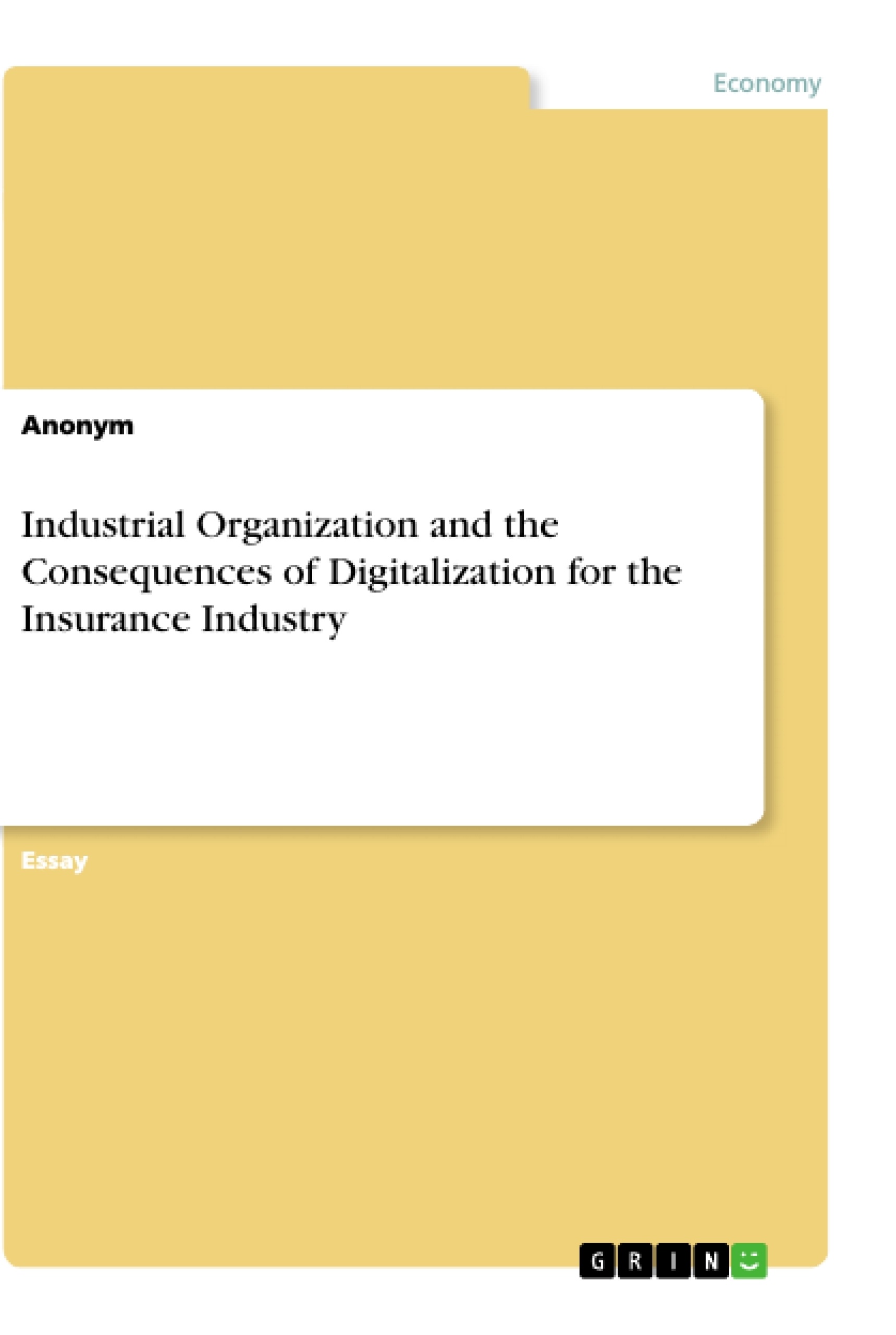This essay tries to identify the consequences drawing on the example of the insurance industry. Here the information technologies may help to assess risks, remove uncertainties and assist the company in their decision making. Thus, the essay focuses on the aspects of decision making and internal organization. Further, the consequences for the insurance industry will be discussed. The essay is structured in four parts. At first, historical technological limitations and their impacts in the insurance market will be discussed. After that the advances in software, big data and artificial intelligence will be considered and opportunities for insurance companies will be shown. Moreover, the essay will discuss the impacts of these issues on the future of the firm. Finally, industry impacts will be considered. The research is based on secondary data from books, journals, newspapers and websites.
The rise of big data, information technologies and artificial intelligence have led to a software revolution that significantly influences firms and industries. Artificial intelligence software may take over many functions resulting in automated pricing, risk assessment, inventory management etc.. Therefore, software devices collect, store and analyze massive amounts of data about customer behaviors, preferences, productivity enhancements, market trends and more. This data provides the company with valuable insights and allows them to capture critical advantages. However, to effectively exploit these advantages a firm has to adapt to the new settings which comes along with structural changes and other consequences.
Inhaltsverzeichnis (Table of Contents)
- Introduction
- The Historical Origins of the Firm
- Emerging Technologies and Opportunities
- The Future of the Firm
Zielsetzung und Themenschwerpunkte (Objectives and Key Themes)
This essay aims to analyze the impact of technological developments, particularly in software, big data, and artificial intelligence, on the insurance industry. The focus is on how these advances affect decision-making, internal organization, and the future of insurance companies. The essay draws on examples from the insurance market to illustrate the consequences of these technological shifts.
- The impact of technological limitations on the insurance industry
- The opportunities created by software, big data, and artificial intelligence
- The restructuring of internal organization in response to technological advancements
- The implications of these changes for the future of insurance firms
- The significance of data analysis and information asymmetry in the insurance market
Zusammenfassung der Kapitel (Chapter Summaries)
- Introduction: This section introduces the topic of the essay, focusing on the software revolution and the potential impact of artificial intelligence on various industries. It highlights the role of big data in providing valuable insights and the need for firms to adapt to these changes. The essay then focuses on the insurance industry and its potential for utilizing these technologies to improve decision-making and risk assessment.
- The Historical Origins of the Firm: This chapter examines the historical context of the insurance industry, emphasizing the limitations imposed by lack of access to data and technological advancements. It highlights how asymmetric information, higher costs, and inefficient decision-making processes were prevalent in the past. The chapter discusses how these limitations shaped the internal organization and activities of insurance companies.
- Emerging Technologies and Opportunities: This section delves into the opportunities presented by software, big data, and artificial intelligence for insurance companies. It explores how these technologies can be leveraged to improve decision-making, gain valuable insights, automate processes, increase productivity, and avoid unnecessary risks. The chapter provides specific examples of insurance companies utilizing these technologies to offer personalized contracts and enhance their services.
- The Future of the Firm: This chapter focuses on the need for firms to adapt their internal organization in response to these technological advancements. It discusses the importance of collecting, processing, and analyzing massive amounts of data to gain a competitive advantage. The chapter examines how firms can restructure their communication, coordination, and decision-making processes to effectively utilize these technologies. It also explores the potential impact of automation, real-time data analysis, and the rise of intangible assets on the future of insurance companies.
Schlüsselwörter (Keywords)
The essay focuses on the implications of software, big data, and artificial intelligence for the insurance industry. Key themes include information asymmetry, decision-making processes, internal organization, data analysis, risk assessment, and the future of insurance firms. The essay also discusses the use of machine learning algorithms, personalized contracts, and the impact of technological advancements on the insurance market.
- Arbeit zitieren
- Anonym (Autor:in), 2016, Industrial Organization and the Consequences of Digitalization for the Insurance Industry, München, GRIN Verlag, https://www.hausarbeiten.de/document/910244


